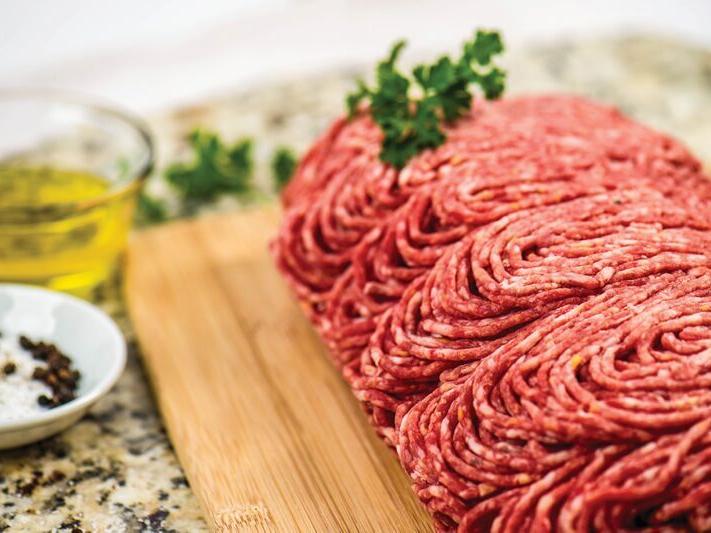Experts from North Dakota State University suggest that the fall market prices will vary depending on how the pandemic plays out — hinting a pending struggle.
With half of the meat in America consumed at restaurants, schools and other food service outlets, prices rapidly declined in mid-March when businesses shut down. But as the nation slowly begins to reopen, prices will begin to rise, NDSU Extension Livestock Economist Tim Petry said.
Although feeder-cattle prices are similar to 2019, predictions were higher at the beginning of the year, he noted. Due to the drought issues across the Missouri Slope region of Western North Dakota, beef cattle herds will not expand anymore this fall and there will be less calves as well, he added.
“Unfortunately, we had a double whammy there with the pandemic going on, so prices crashed. Although, (some) have come back. We would have gotten through this but … there’s no good management strategies during a drought,” Petry said. “They all either cause higher costs or prices. So thankfully, it did rain in places out there but we got a short hay crop and again, it really varies out there by area.”
The next few months may be a struggle for beef and dairy cattle farmers, Petry said, pointing how current precipitation may allow for some prosperity in Western North Dakota. Though the drought has caused shorter hay crops this year, livestock farmers may have to resort to growing cover crops at the end of July to create forage for the fall, he said.
Cover crops that range from mixtures of oats, turnips and radishes will provide sustenance for beef and dairy herds. As long as precipitation continues, those cover crops will germinate and act as a feed supplement, he said, adding, the COVID-19 pandemic has reduced grain prices, so corn and other feed grains may be another option for farmers.
On the sheep side, North Dakota’s flock is expanding and prices look relatively good with a strong ethnic demand. However, issues from the drought, grazing allotments and predators in the Inter-mountain West will determine the market forecast, Petry added.
Sheep prices took a little dip in the spring. Though grocery stores saw a 33% increase from consumer expenditures, that number was not enough to make up for lost quantities served at restaurants, cruises or food service outlets, NDSU Extension Sheep Specialist Travis Hoffman said.
But now, sheep prices are on a four-week trend increase in both feeder prices and market lamb prices since June, Hoffman said, noting that people prefer a unique meal alternative.
“American lamb is increasing on restaurant menus as a trend over the last couple of years. The reason for lamb trending on restaurant menus is (due to) a couple of things: people want to have something that’s different when they have an eating experience, and also the millennial generation enjoys creativity and adventurous meals — lamb fits in that niche,” Hoffman said, noting that this demand will be a continuing push for sheep farmers.
In the United States, experts predict that more than half of the lambs are born and harvested for the non-traditional or ethnic market, he said, explaining that lambs are worth substantially more, especially in New England, due to their high demand.
One of the main challenges sheep farmers face is isolation, Hoffman said. The majority of consumers live on the coasts of the United States and the closest commercial processing plant for Western North Dakota sheep farmers is located in Colorado.
“With the re-openings of socializing and allowing food to be part of a family’s entertainment, lamb prices throughout 2020 should remain strong,” Hoffman said. “If we have a (delayed) timeline of social interactions, the markets will simply stay steady. If not, regress a little bit.”
Fluctuating markets is not a new aspect for livestock farmers, nonetheless this year’s market forecast is unlike previous times.
“I’ve been in this business almost 50 years and this is the most uncertain and highly volatile market that I’ve ever experienced because it’s a worldwide problem, not just regionally. And nobody knows how long it’s going to last, how bad it’s going to get and we’ve never experienced it ever before so there’s nothing we can go back (on),” Petry remarked. “... Markets don’t like uncertainty; they’re more volatile and they take risks and so on. It’s just an unprecedented time not only in the livestock industry; it’s affecting everybody.”
The unforeseeable future will be a struggle, but experts suggest a bright future is beyond the storm.
The Link LonkJuly 24, 2020
https://ift.tt/2CKTjPE
Pandemic setbacks: Fall beef, cattle and sheep demands questioned - The Dickinson Press
https://ift.tt/2RxTDX4
Beef


No comments:
Post a Comment